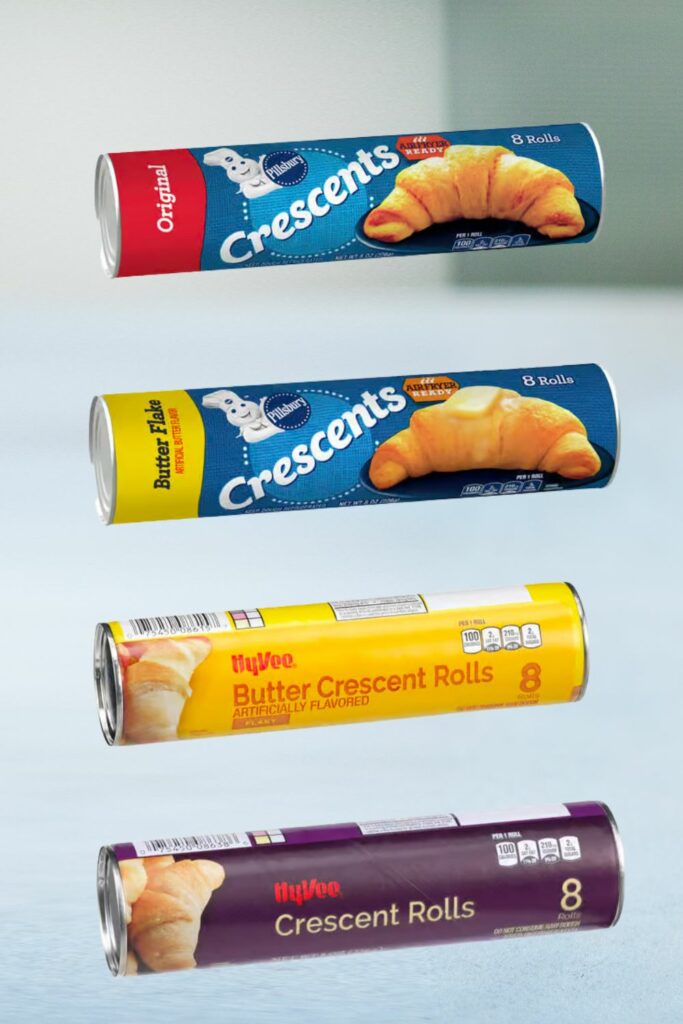Is it worth taking a chance on expired crescent rolls? That’s the million-dollar question for many home cooks and food enthusiasts. While it can be tempting to try and salvage those forgotten rolls tucked away in the back of the refrigerator, the consequences of consuming expired dough can be serious. In this article, we’ll explore the potential risks associated with eating expired crescent rolls and why it’s important to err on the side of caution when it comes to food safety.
When it comes to expired food, trust your instincts. The smell and taste of spoiled food can often be an indication that it’s no longer safe to consume. In the case of crescent rolls, discoloration, mold growth, and an off-putting odor are all warning signs that the dough has gone bad. Consuming expired crescent rolls can lead to food poisoning, resulting in symptoms like nausea, vomiting, diarrhea, and even more severe complications in some cases.
So, before you decide to roll the dice on those expired crescent rolls, it’s crucial to weigh the potential risks involved. When it comes to your health and the health of your loved ones, it’s always better to be safe than sorry in the kitchen. Stay tuned as we delve deeper into the consequences of eating expired crescent rolls and provide tips on proper food storage to prevent future mishaps.
Understanding expiration dates and food safety
Expiration dates are an essential tool for consumers to determine the freshness and safety of food products. However, they can be confusing, especially when it comes to baked goods like crescent rolls. It’s important to understand that these dates are set by the manufacturer and indicate the time frame during which the product is expected to retain its quality and taste. While consuming expired crescent rolls may not always lead to immediate illness, it can significantly increase the risk of foodborne illnesses.
Food safety should always be a priority, and it’s crucial to follow the guidelines provided by the manufacturer. Ignoring expiration dates can result in consuming harmful bacteria or toxins that have developed over time. Even if the rolls appear visually fine, it’s best to discard them once they have passed their expiration date to avoid potential health risks.
Potential risks of consuming expired crescent rolls
Consuming expired crescent rolls can have various potential risks to your health. One of the primary concerns is the growth of harmful bacteria, such as Salmonella and E. coli. These bacteria can multiply rapidly in expired dough, and when ingested, can cause food poisoning. Symptoms of food poisoning can range from mild gastrointestinal discomfort to more severe complications, especially in vulnerable individuals such as young children, pregnant women, and the elderly.
Additionally, expired crescent rolls may contain harmful toxins produced by mold growth. Mold can flourish in moist environments, and if the dough has been improperly stored or exposed to moisture, it becomes an ideal breeding ground for mold. Ingesting these toxins can lead to adverse health effects, such as allergic reactions or respiratory problems, particularly in individuals with pre-existing sensitivities or compromised immune systems.
Common signs of spoiled crescent rolls
Detecting spoiled crescent rolls is crucial to prevent the consumption of expired dough. There are several common signs that indicate the dough has gone bad. Firstly, pay attention to any visible changes in color or texture. If the rolls appear discolored or have developed dark spots, it’s a clear indication of spoilage. Additionally, mold growth is a significant red flag. If you notice any fuzzy patches or greenish-blue spots on the rolls, it’s best to discard them immediately.
Another critical indicator of spoiled crescent rolls is the presence of an off-putting odor. Fresh, unexpired dough typically has a mild, yeasty smell. However, if you detect a sour, rancid, or foul odor coming from the rolls, it’s a strong indication that they have gone bad. Trust your senses and use these visual and olfactory cues to determine the freshness of the dough.
Foodborne illnesses associated with expired crescent rolls
Consuming expired crescent rolls can put you at risk of various foodborne illnesses. Food poisoning is a significant concern, and the bacteria commonly associated with expired dough can cause severe symptoms. Salmonella, a common bacteria found in raw or undercooked foods, can cause symptoms like diarrhea, abdominal cramps, and fever. In more severe cases, it can lead to dehydration and hospitalization.
Another potential risk is E. coli contamination. This bacteria is commonly found in raw or undercooked meat products, but it can also be present in expired dough that has come into contact with contaminated surfaces or ingredients. E. coli infection can cause symptoms like bloody diarrhea, abdominal pain, and in some cases, kidney failure.
It’s important to note that the severity of these foodborne illnesses can vary depending on factors such as the individual’s overall health, age, and the amount of contaminated dough consumed. However, it’s crucial to prioritize food safety and avoid consuming expired crescent rolls to minimize the risk of these illnesses.
Tips for storing and extending the shelf life of crescent rolls
Proper storage is key to extending the shelf life of crescent rolls and ensuring their freshness. Here are some tips to help you store them correctly:
1. Check the expiration date: Always purchase crescent rolls with a reasonable expiration date, giving you ample time to consume them before they spoil.
2. Refrigerate promptly: Once opened, refrigerate the dough in an airtight container or resealable bag to prevent exposure to air and moisture. This will help slow down the spoilage process.
3. Avoid cross-contamination: Store crescent rolls away from raw meat, poultry, or seafood to prevent potential bacterial contamination. Keep them in a separate section of the refrigerator to minimize the risk of cross-contamination.
4. Freeze for longer storage: If you don’t plan on consuming the rolls within a few days, consider freezing them. Wrap the rolls tightly in plastic wrap or aluminum foil before placing them in a freezer-safe bag or container. Frozen crescent rolls can typically last up to two months.
5. Thawing frozen crescent rolls: When ready to use frozen crescent rolls, transfer them to the refrigerator overnight to thaw slowly. This will help maintain the quality and freshness of the dough.
By following these storage tips, you can maximize the shelf life of crescent rolls and minimize the risk of consuming expired dough.
How to determine if crescent rolls are still safe to eat
While expiration dates provide a general guideline, there are additional ways to determine if crescent rolls are still safe to eat. Before discarding them based solely on the expiration date, consider the following factors:
1. Visual inspection: Examine the rolls for any signs of mold, discoloration, or unusual texture. If they appear visually fine, proceed to the next step.
2. Smell test: Give the rolls a sniff. Fresh crescent rolls should have a mild, yeasty smell. If you detect any sour, rancid, or foul odor, it’s a strong indication that the dough has spoiled.
3. Taste test (with caution): If the rolls pass the visual and smell test, you can proceed with a small taste test. Take a tiny nibble and pay attention to any unusual flavors or textures. If anything seems off or unpleasant, it’s best to discard the rolls.
Remember, it’s always better to be safe than sorry, especially when it comes to food safety. If there’s any doubt about the freshness or safety of the crescent rolls, it’s best to err on the side of caution and dispose of them.
Alternatives to using expired crescent rolls
If you find yourself with expired crescent rolls and are hesitant to use them, there are alternatives you can consider. Instead of risking the potential consequences of consuming expired dough, try these options:
1. Make your own dough: If you have the time and ingredients available, consider making your own crescent roll dough from scratch. This way, you have complete control over the freshness and quality of the ingredients.
2. Purchase fresh dough: If making dough from scratch isn’t feasible, many grocery stores offer fresh, pre-made crescent roll dough in the refrigerator section. This can be a convenient and safe alternative to using expired dough.
3. Explore other recipes: Get creative in the kitchen and experiment with other recipes that don’t require crescent roll dough. There are countless delicious options that can satisfy your cravings without the potential risks of using expired dough.
Remember, it’s essential to prioritize food safety and make informed decisions when it comes to the ingredients you use in your recipes.
Risks vs. benefits: Is it worth the risk?
When it comes to expired crescent rolls, the risks far outweigh the benefits. While it may be tempting to salvage those forgotten rolls, consuming expired dough can have severe consequences for your health. From the potential growth of harmful bacteria to the risk of foodborne illnesses, it’s crucial to prioritize food safety and err on the side of caution.
By understanding expiration dates, recognizing the signs of spoiled crescent rolls, and following proper storage guidelines, you can minimize the risk of consuming expired dough. When in doubt, always trust your senses and dispose of any questionable food items. Your health and the health of your loved ones should always take precedence over salvaging expired ingredients.
Conclusion: Making informed decisions about expired crescent rolls
In conclusion, the decision to consume expired crescent rolls should not be taken lightly. While it may be tempting to save money or reduce food waste, the potential risks to your health make it imperative to prioritize food safety. Trust your senses and pay attention to the warning signs of spoiled dough, such as discoloration, mold growth, and an off-putting odor. By following proper storage guidelines and understanding the risks associated with expired dough, you can make informed decisions in the kitchen and safeguard the well-being of yourself and your loved ones. Remember, when it comes to expired crescent rolls, it’s better to be safe than sorry.






